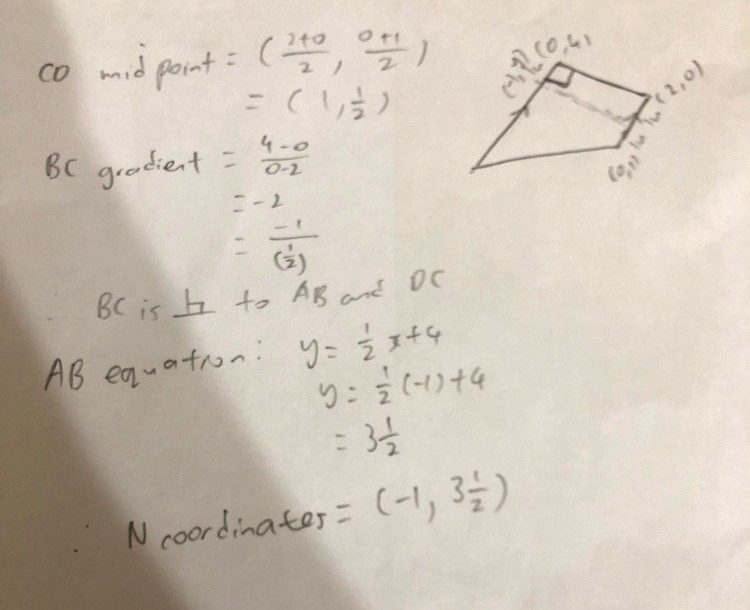Jordon Yee's answer to Shalyn's Secondary 3 A Maths Singapore question.
done
{{ upvoteCount }} Upvotes
clear
{{ downvoteCount * -1 }} Downvotes

Hi, if N is equidistant from both C and D, that means that it is perpendicular to the midpoint of CD, u may understand it better if u try to draw a diagram of this. Then we use counting method (e.g. if D move to a point on the same line, let’s say 1 unit, then the parallel line AB would move 1 unit from B and these two points after moving 1 unit are actually perpendicular). From this we can solve for the x and y coordinates of point N. It might be easier if u draw a rough sketch. Although the question says answers from diagram drawing is not accepted, the counting method and equidistant point should make sense for any other similar diagrams if the two lines are parallel to each other.
Date Posted:
3 years ago

